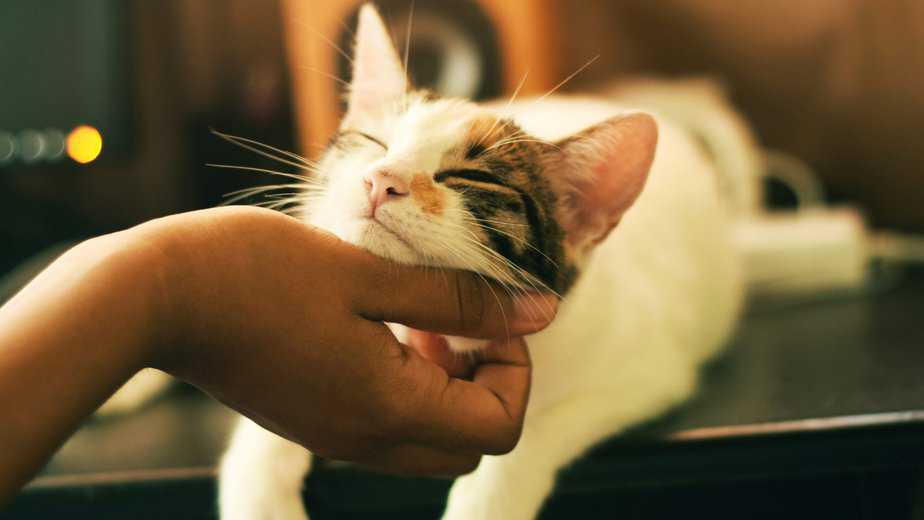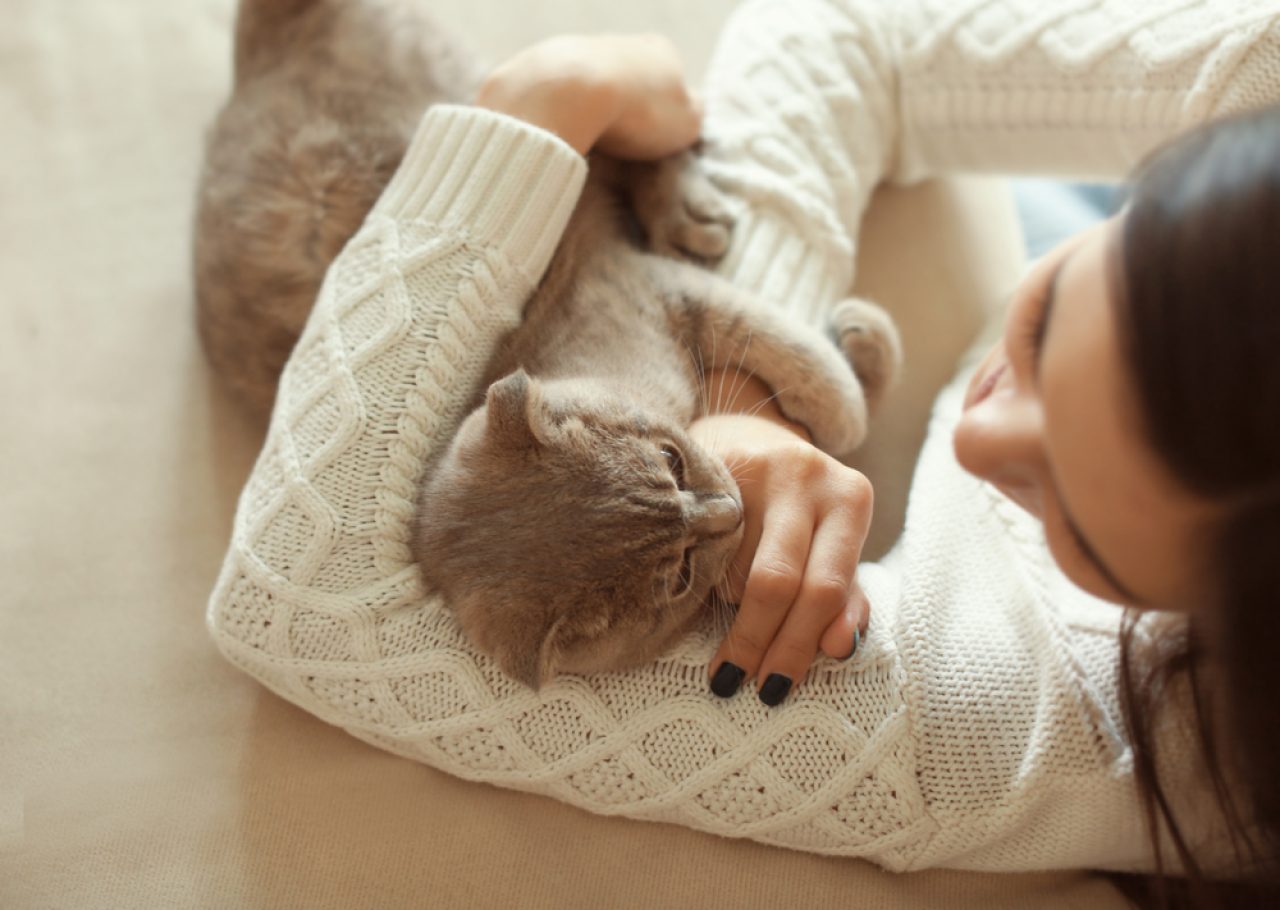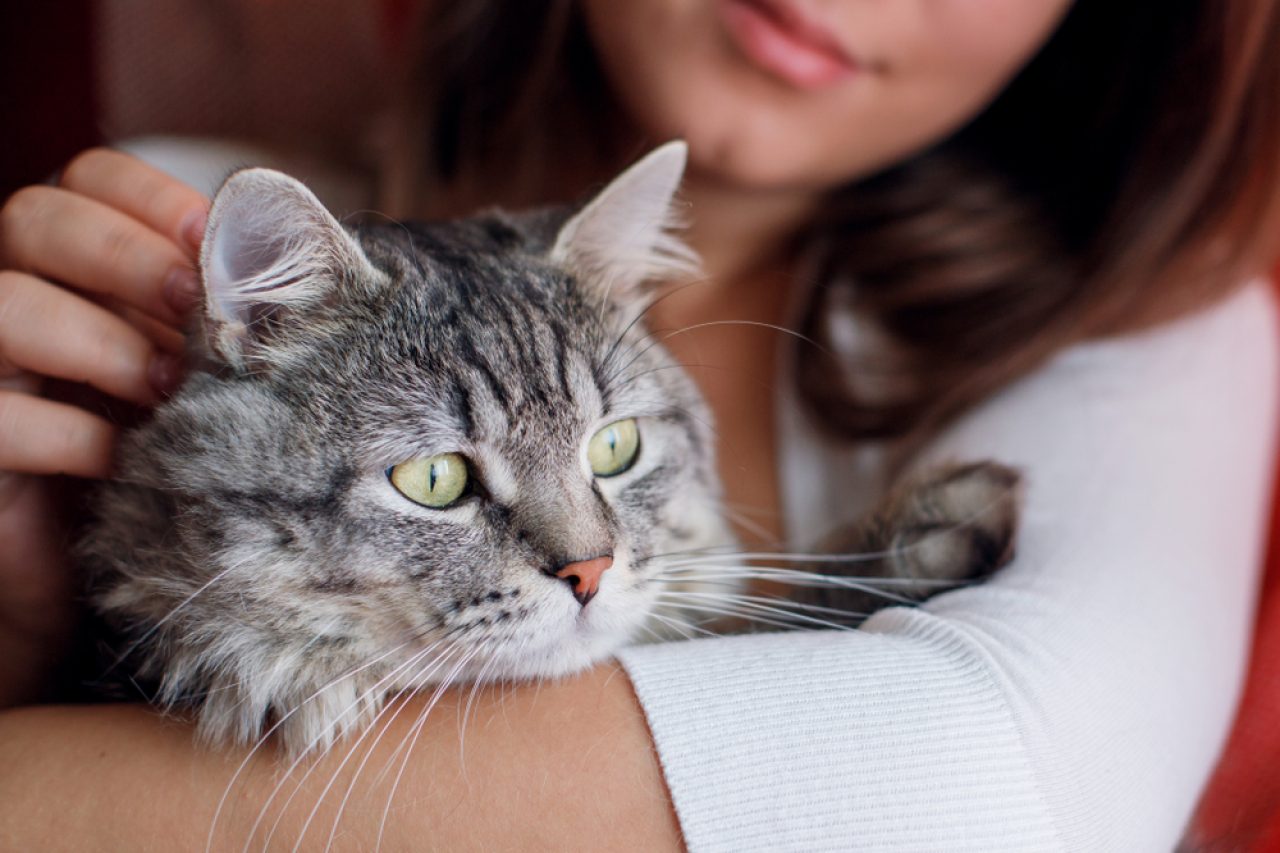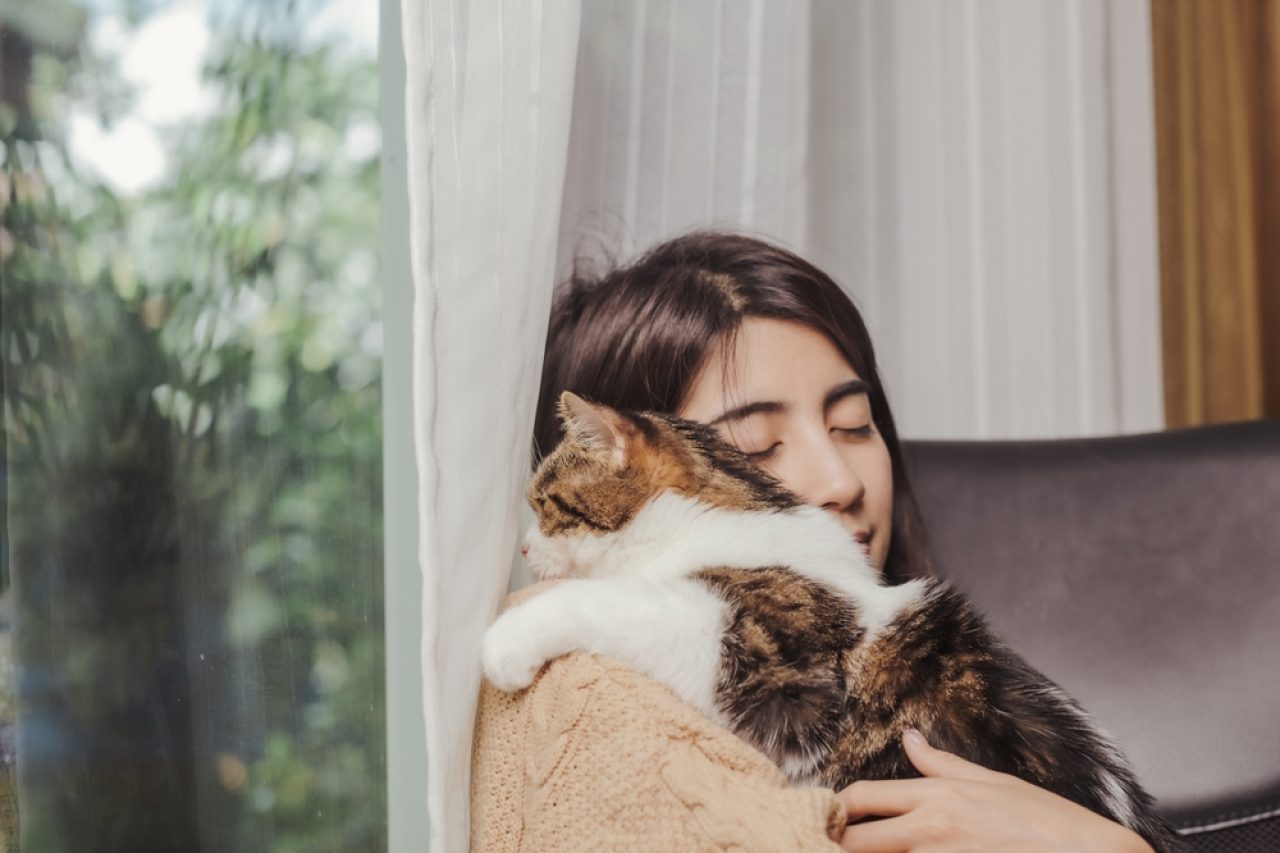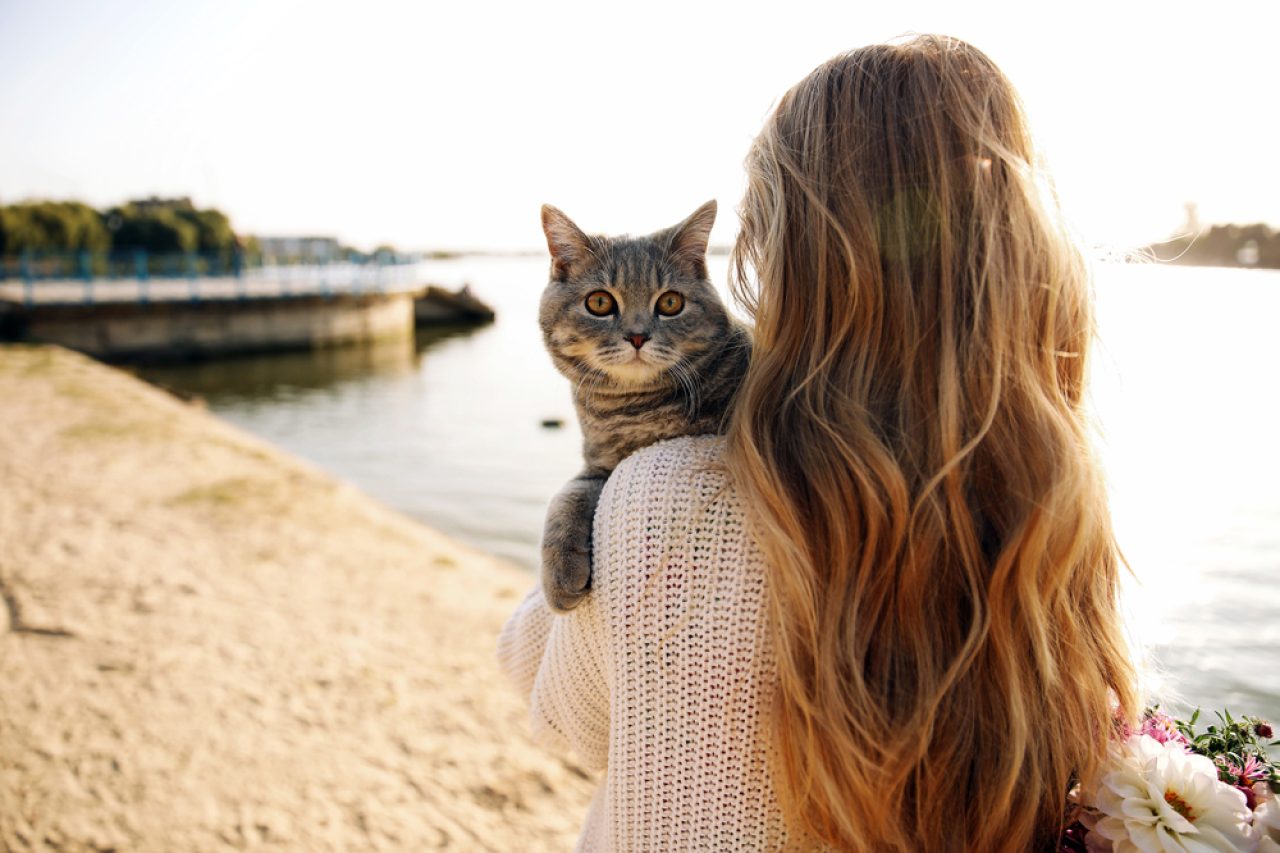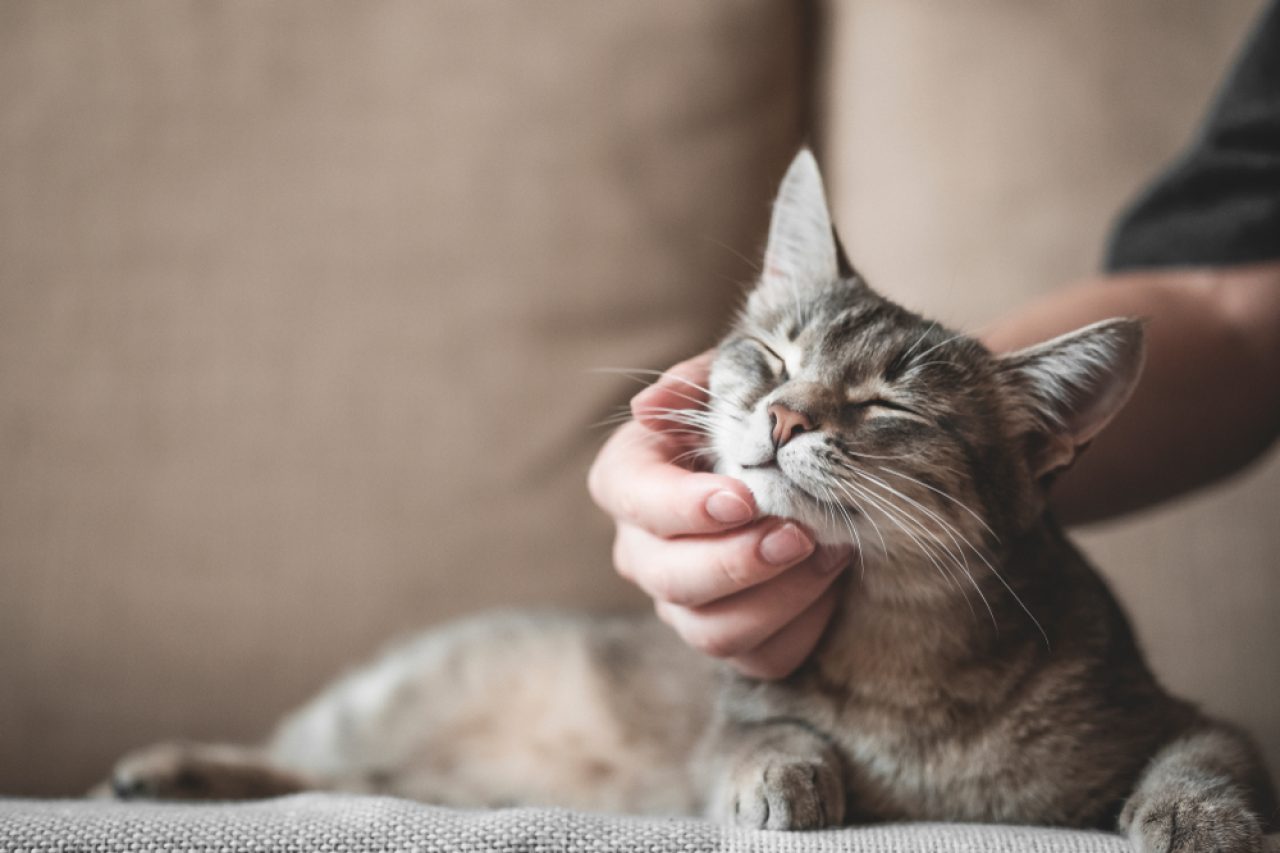📖 Table of Content:
We’ve all been taught that petting your cat is a purrfect way to show her how much you love and appreciate her. Stroking your feline helps you bond and spend some quality time with her, right? Then why do cats shake their heads after you pet them?
Our feline divas are known for having big purrsonalities. One thing they absolutely love is being in control. Depending on their character, cats either love petting or try to avoid it. If you’re one of the lucky parents, you have a little cuddle buddy who loves the affection.
Still, even though she enjoys petting, you’ve noticed lately that your feline has started shaking her head afterward. Why could that be? Well, we’re here to tell you there could be many. Don’t worry, it’s probably nothing serious, but your kitty is still trying to tell you something.
Yes, cats love attention – when they decide they want some. But what do they really feel when you pet them? Before we find out why your feline shakes her head after a petting session, let’s find out what she feels during one.
What does your cat really feel when you pet her?
Although most of us think cats live for soft scratches and petting sessions, some of them don’t enjoy it as much as we believe. Don’t get me wrong, your fluff loves the attention. It just depends on her mood and who’s petting her.
Our feline friends are usually on high alert for any kind of danger, which is why it’s important for them to never lose focus. When we pet them, cats can easily lose themselves in all that attention and love. You’ll notice they close their eyes and start purring, meaning they’re loving what they’re getting.
However, after some time, our kitties remember they need to pay attention to their surroundings. That’s when they’ll probably show you it’s time to let them go.
On top of that, cats can easily get overstimulated. Even though your cat might enjoy petting at first, after some time, it might start to irritate her. Make sure to pay attention to your feline’s body language and know when it’s time to stop and leave her be.
Why do cats shake their heads after you pet them? 4 probable reasons
It’s normal for your cat to shake her head after you pet her. It’s probably nothing serious, but it’s still good to know the possible cause. Is she trying to tell you something, or just getting her fur back in place? Let’s see the most common reasons.
1. They’re fixing their hair
The queen always has to look good, right? She can never have a bad hair day. It’s well-known that cats are particular about their grooming. They love being clean, spending time in freshly washed sheets, or having their fur purrfectly aligned.
When you’re petting your sweet furbaby, you don’t really think about the mess you’re making on her head. At first, she might not notice it either if she’s in her element and loving all the attention she’s getting. After some time, however, her unruly fur may start getting on her nerves.
Once it does, your cat will probably move away from your hand and shake her head to get her hair back in place. You can’t see her looking bad! Besides the bad hair, it could be that all that stroking got some fur into her eyes. That’s when she’ll shake her head to try to get it out.
2. It’s becoming too much for them
Cats are easily overstimulated, especially after a long petting session. Although most of them enjoy cuddling and spending time with their human parents, it’s good to know when it’s time to stop and give your feline some space.
We get it, just looking at your little furbaby makes you want to cuddle her all day and let her know how loved she is. However, learning when your cat’s had enough is just as important as giving her affection. If you’ve spent too much time stroking her, your furriend will probably shake her head out of discomfort.
There are some signs you can look out for if you’re unsure whether or not your cat is becoming unhappy or annoyed. Turning her head away or remaining passive is probably the first indicator that your kitty’s had enough of your physical affection (for now).
Shaking, excessive grooming, ears flattening, biting your hand – these are all signs that it’s time to give your cat some rest. It doesn’t mean you’re doing anything wrong or that your purrincess loves you any less. She just needs some alone time and that’s okay.
3. Take it as a final warning
If you’re deep in your favorite TV show while at the same time petting your cuddle buddy, you might be too distracted to notice all the signs we’ve previously mentioned. In that case, your cat might move away from you and shake her head to let you know she’s had enough.
This should definitely be your final warning. After this happens, stop what you were doing and don’t pet her until she comes back when she’s ready. It’s important to let her decide when she’s happy to start a new petting session with you. Until then, let her do her thing and you can go back to doing yours.
4. They might have an ear infection or some other health issue
If your cat’s been shaking her head excessively lately, it could be a strong indicator that she’s dealing with some or other health issue. The most common ones related to this behavior are ear infections, but not exclusively. It could also be a sign of low blood sugar or hypoglycemia.
If you’re suspecting that it’s ear-related after all, there could be many issues that cause this. Some of them include the following:
- allergies
- a foreign body lodged inside the canal
- bacterial infection
- excessive ear wax
- immune-mediated disease.
In any case, it’s important to pay a visit to the vet and get a proper diagnosis. They’ll give your feline the right treatment that will help her get back to her happy cheery self.
How to properly pet your cat
Now that you know why do cats shake their heads after you pet them, it’s obvious that you have to make some changes in your petting style. And you thought that there was no right or wrong way to pet your kitto…
Understanding when and how to pet your cat is an important part of your bonding experience. Although there are some spots that most of our fuzzballs love, not all cats are the same.
It’s important to take your time and observe what your cat likes the best, so let’s see how you can scratch all the right places for the best possible petting sessions.
1. Let her be in control
Before you start petting your cat, make sure she’s the one asking for it, not you. The most important thing is to let your purrincess be in control. Only when you’re sure she’s ready to receive some love and affection, you can start your long-awaited petting session.
Even when you start petting her, make sure she’s still the one in control. Maybe she’ll change her mind three minutes later, and it’s important to let her move away if that’s what she wants. You have to listen to the boss and know your place in this relationship.
2. Read her body language
Body language is the only way for your cat to communicate with you, and it’s important to listen to what she has to say. It can tell you a lot – what she likes, what she hates, or if she’s had enough of it altogether.
When you first start petting your feline, let her move around and lead you to the place she wants you to scratch. If she likes what you’re doing, she’ll softly wave her tail from side to side and keep it upright. She’ll be relaxed, purring, or maybe even make some invisible air biscuits.
On the other hand, there are some signs that it’s time for you to change something or that she’s no longer enjoying the petting session as much. In that case, she may start batting your hand with her paws, shaking her head, hissing at you, flattening her ears, or even biting you.
If any of these signs happen, it’s important to act accordingly. Your cat’s body tells you all you need to know, you just have to learn to understand it.
3. Know when to stop
Now that you’ve learned all the signs that your kitty’s had enough of your attention, it’s easy to realize the right time to stop. I know, it’s not always easy to stop the cuddles when you’re the one who needs more, but it’s the right thing to do.
The most important thing when it comes to bonding with your furry friend is gaining her trust. If you respect her needs and allow her to leave when she wants to, she’ll be coming back for more in no time.
